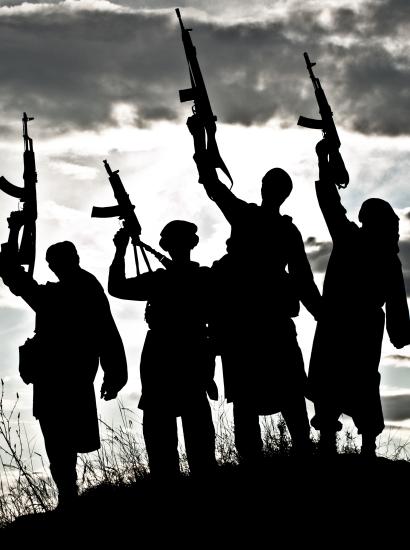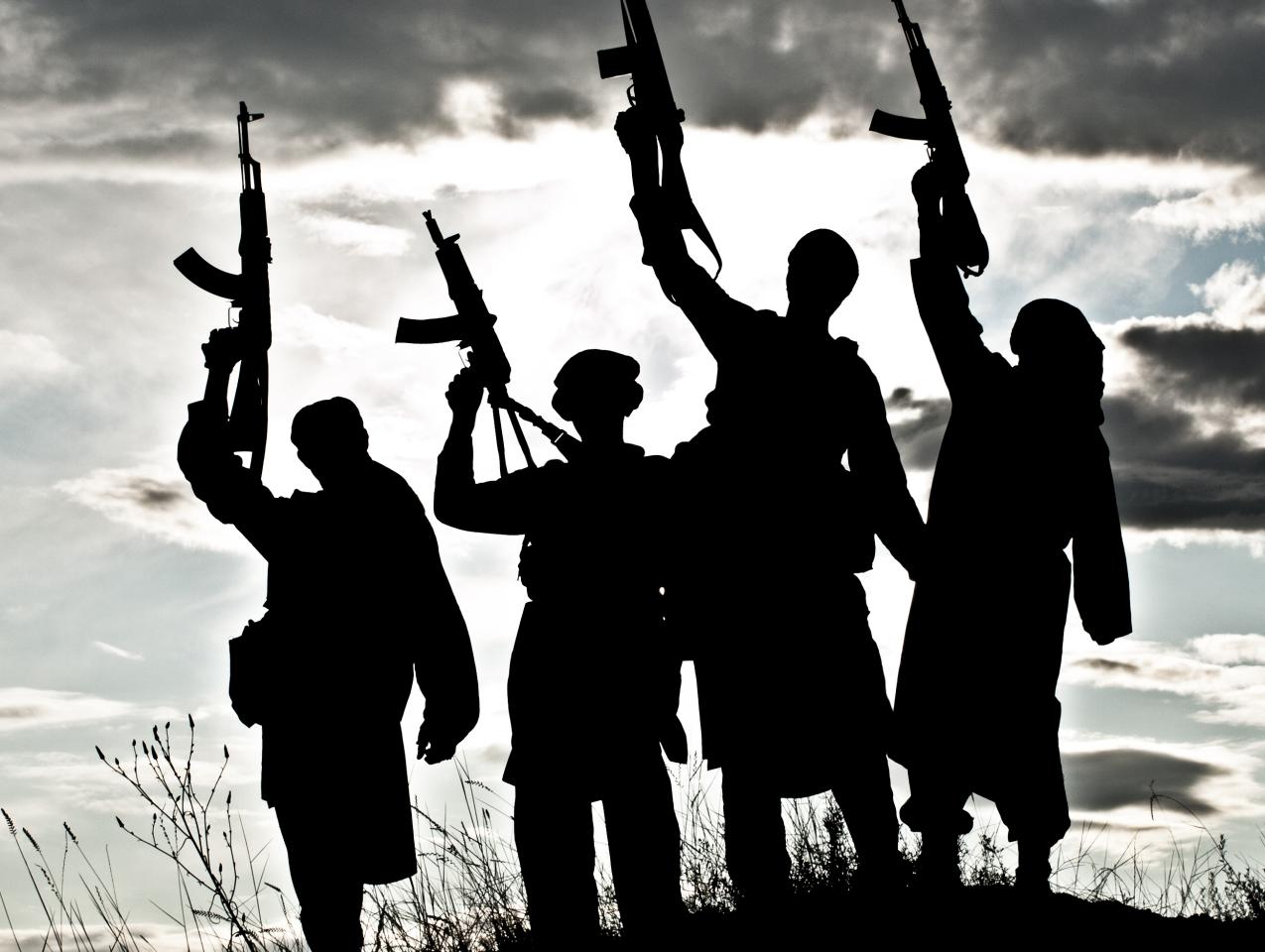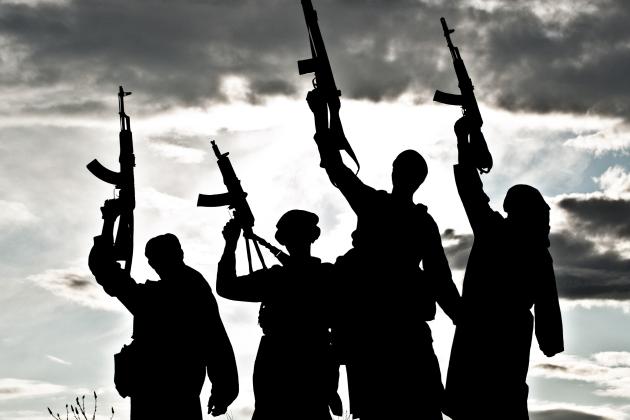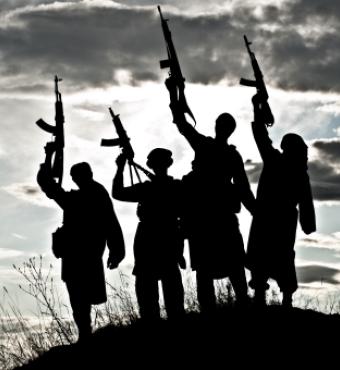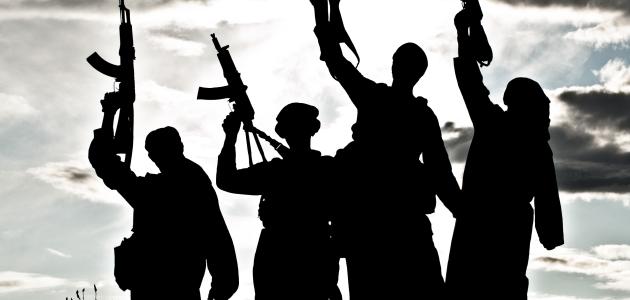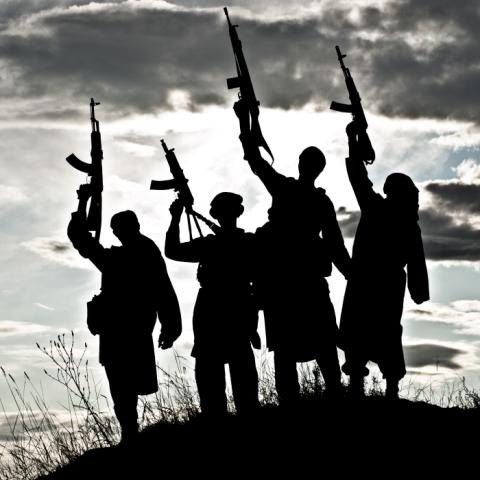For the past several years, the jihadi terrorist group known as the Islamic State (IS) has been in decline in its original territorial base of Iraq and Syria. Though continuing to posture as a state-building enterprise—indeed, as the restored caliphate whose caliph is the ruler of all the world’s Muslims—it has failed to establish control anywhere in the region since early 2019. Where IS survives here is as an insurgency with cells that carry out assassinations, ambushes, and bombings of security forces and civilian targets. In this sense the group remains alive, but the momentum is not with the insurgents, as recent reporting has shown. Emblematic of the decline is the failure of IS this year “to launch its annual [Ramadan] offensive” in Iraq—a tradition going back almost two decades to Abu Mus‘ab al-Zarqawi’s al-Qaida in Iraq. In Syria, meanwhile, the IS leadership has been under relentless assault from U.S. Central Command (CENTCOM), which seems to announce a special operation targeting a senior IS leader almost monthly. Syria has ceased to be a reliable haven for IS leaders, including the “caliph,” of whom two were killed this past year. The pseudonymous Abu al-Husayn al-Husayni al-Quarashi, who was announced as the new caliph in November 2022, appears more or less powerless—if he has not already been killed as Turkey recently claimed.
Where IS has succeeded in the past several years, however, is in spreading its ideology to the more far-flung areas of Africa and Central Asia, where thousands of militants have taken up the cause of the caliphate to the great detriment of local populations. While one may question these local militants’ fidelity to IS as a centralized organization, the group does well in projecting organizational cohesion in its propaganda. In late 2022 and early 2023, for instance, hundreds of militants in these locales were pictured pledging bay‘a, or fealty, to the new caliph, despite being in complete ignorance of his identity or qualifications. The caliphate idea lives on, and especially in Africa, which together with Afghanistan features the most dangerous and active IS affiliates.
These affiliates are given the name of “provinces” in keeping with the original expansionary model introduced by Abu Bakr al-Baghdadi back in 2014. The smallest of the so-called “provinces” is the affiliate in Somalia, which has some 200 fighters and claims attacks only occasionally but has proved effective as a financial hub. (In January of this year, the U.S. special forces conducted an operation that killed Bilal al-Sudani, an IS leader described by Secretary of Defense Lloyd Austin as “responsible for fostering the growing presence of ISIS in Africa and for funding the group’s operations worldwide, including in Afghanistan.”) To the north, in Egypt, is the network of militants known as the “Sinai Province,” which remains an active insurgency with hundreds of fighters targeting Egyptian security forces. As Aaron Zelin describes nearby, the IS affiliates elsewhere in North Africa have ceased operations for the time being.
It is farther south, in the Sahel region and in the Lake Chad basin of northeastern Nigeria, where IS has its most significant presence in Africa. These are the so-called “Sahel Province” and “West Africa Province,” respectively. The latter, which grew out of the once al-Qaida-aligned Boko Haram, boasts some 5,000 fighters and controls broad swathes of rural territory, where it levies taxes, provides security, and imposes a harsh interpretation of Islamic law. It frequently clashes with Nigerian military and African Union forces seeking to suppress it. The Sahel Province is a newer and smaller entity, having once been classified as a unit within the West Africa Province but since March 2022 emerging as a “province” in its own right. Based along the border between Mali and Niger, the Sahel branch of IS formally began operations in 2019 with assaults on security forces and mass atrocities carried out against perceived heretics. While numbers of fighters are difficult to estimate, the Sahel Province has been on an upswing in recent years, and especially since the departure of French forces from Mali in mid-2022. As one recent analysis of the group’s operations concludes, “IS Sahel is in the process of establishing a pseudo-state encompassing the rural areas stretching from Gao in the north to Dori in the south and from N’Tillit in the west to the border area of Tahoua in the east.” Beyond the Sahel and northeastern Nigera, IS has also established itself in the Democratic Republic of Congo and in Mozambique, where local jihadi networks have rebranded as IS provinces (the “Central Africa Province” and “Mozambique Province,” respectively).
The activities of all these “provinces” are proudly trumpeted in IS propaganda, and indeed it is team Africa that features most regularly and prominently in IS’s centralized media network online. On the messaging platform Telegram, for instance, where IS media is curated and distributed by semi-official channels, most of the content these days relates to the African “provinces.” On May 16, for instance, the IS media feed included a report on a double suicide attack carried out against African Union forces in northeastern Nigeria and photos of an attack on a government outpost in Beni in the Democratic Republic of Congo. The feed for the following day featured photos of IS fighters in combat with the Nigerian army, photos of IS fighters seizing control of a town in northeastern Mali and distributing pamphlets on IS’s ideology, and four further claims of attacks in Nigeria. The West Africa and Sahel “provinces” also regularly produce videos highlighting their activities. A video from the Sahel affiliate in April showed footage of battles against various enemies, executions, and the carrying out of some of the hudud penalties in Islamic law, namely stonings and amputations. At one point a narrator proclaims the IS presence in the Sahel as an “admission” of the West’s failure to destroy the caliphate project in Iraq and Syria.
Similar sentiments are expressed in IS’s weekly Arabic newspaper, every issue of which includes an editorial on a particular theme. Several of these have highlighted the importance of Africa in keeping the caliphate project alive, even stating that Africa has replaced Iraq and Syria as the place where tamkin, or territorial control, has been established and thus to where Muslims ought to perform hijra (“emigration”). “The scenes that we are seeing today in the land of Africa are the same that we were seeing before in Iraq and Syria,” one editorial stated last year, going on to call on the faithful to make hijra to Africa, “for today it is a land of hijra and jihad.” Thus far, the call does not appear to have been heeded. We have not seen the thousands of extremists flocking to Africa that we saw going to Iraq and Syria back in 2014 after the declaration of the caliphate. Perhaps the semi-arid landscapes of rural Mali and the Sambisa Forest do not evoke the caliphal dream quite like the Islamic heartlands of the Fertile Crescent. Nonetheless, the prospect of increasingly robust IS territories in Africa is a strong likelihood, and one that the West ought to take seriously.
It should be noted, however, that IS does not hold a monopoly over the African jihadi scene. Al-Qaida has also managed to maintain a presence on the continent. Much like the case of IS, the central leadership of al-Qaida has been battered and bruised to the point of marginality, but its affiliates in Africa have helped to prop up the brand name. Al-Qaida has three active African affiliates, the most significant being al-Shabaab in Somalia, which according to the UN has 7,000 to 10,000 fighters and generates $100 to $150 million per year in tax revenue in the vast areas under its control. Al-Qaida’s oldest affiliate in Africa is the Algeria-based al-Qaida in the Islamic Maghrib (AQIM), which has been operationally constrained in recent years despite succeeding in sponsoring the third al-Qaida affiliate in Africa, Jama‘at Nusrat al-Islam wa’l-Muslimin (JNIM). JNIM, which is based in the Sahel, was announced in 2017 as the union of four Mali-based extremist groups. It is more powerful than the IS affiliate in the Sahel, holding more territory and carrying out three times as many operations. It also proceeds with a lighter touch as regards its use of violence and imposition of Islamic law, and has even sought at times to negotiate for strategic advantage with the state and non-state entities it considers heretical. Since 2019, JNIM and its IS rival have fought each other in a war fueled by religious animosity, with JNIM branding IS fighters as “Kharijite” extremists and IS describing JNIM as “the apostate al-Qaida militia.”
The rising specter of jihadism in Africa is no doubt concerning, and mitigating the threat ought to be a priority for U.S. policymakers. To be sure, most of these movements are focused on local objectives (i.e., the defeat of local regimes and their replacement with Islamic states). Yet the threat to the West, including the United States, is very much real. Even if just a small percentage of a local jihadi group’s efforts are devoted to international acts of terrorism, this creates the potential for a devastating terrorist attack that could derail U.S. foreign policy, distracting us from the important challenges of a rising China and revisionist Russia. As AFRICOM commander General Michael Langley recently noted in testimony before the Senate Armed Services Committee, “As [these jihadi groups in Africa] grow, the risk of terrorist plots against U.S. citizens, embassies, and ultimately the Homeland are likely to rise … In the late 20th century, al-Qaeda grew unchecked in Africa culminating in the 1998 bombings of our embassies in Kenya and Tanzania.” Investing in African security, therefore, ought to be of paramount importance, all the more so as Russia and China seek to compete with the West by offering their own services in this and other regards.
Of course, there are no easy solutions, and all the “provinces” and affiliates described must be approached in their own particular contexts. This could, in the case of JNIM, include a mix of counterterrorism pressure and negotiation with the aim of peeling off those militants less committed to global jihad than others. With the French departure, however, the window for such an approach has likely closed. The principal means of constraining these groups must be military force, together with support for good governance and institution building, which are poorly lacking in many parts of Africa. It is weak and poorly governed states that have allowed for the emergence of ungoverned spaces that the jihadis exploit. The government of Burkina Faso, for instance, controls only about 40% of the state’s territory. The matter of military coups d'état has also complicated matters for the West. After two coups in Mali in 2020 and 2021, French forces departed the country after a nine-year deployment, leaving Russian’s Wagner Group to fill the void.
In Africa, the United States finds itself at the intersection of counterterrorism and strategic competition. It must find a way to navigate both. Following the coups, Mali may be an impractical partner, but the West can still hold the tide in the Sahel, and elsewhere in Africa, by committing itself to local and regional counterterrorism missions that can, at a minimum, slow these groups’ momentum. Only through “relentless suppression and ultimate pacification,” as General Langley put it, will the local peoples and international community be made safe. That is what the United States and its partners aimed for in Iraq and Syria, at great cost and with unbounded commitment. They should aim for the same in Africa as well.









